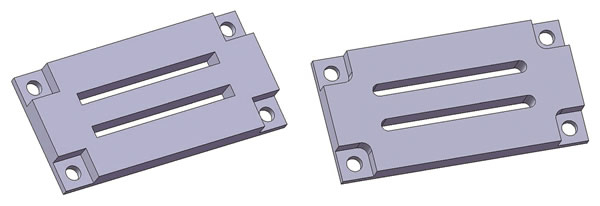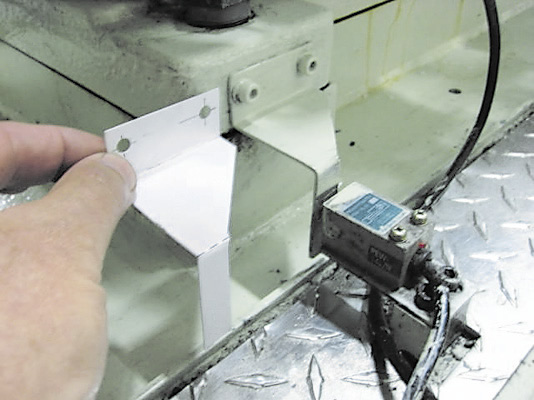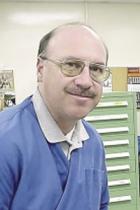In last month’s column, I discussed the value of communication between engineers and shop personnel. Here are some additional tips in that vein for engineers:
Avoid flippantly adding fillets, radii and chamfers on parts just because it is easy to do with a computer. Such features can substantially increase the time it takes to make parts, as special cutters and additional programming may be needed.


Square corners are nearly impossible to cut with a milling machine. Include radii on pockets and cutouts when possible. All images courtesy J. Harvey.

Avoid showing flat-bottomed holes in drawings unless you actually want the hole to be flat-bottomed. This can be confusing to a machinist, especially if it is not obvious how the hole will be used. Showing a drill tip angle at the
bottom of a hole will remove any doubt as to what you want and make it faster for the machinist to produce. Creating a flat bottom in a hole requires an extra tool or
operation.
Be aware that milled pockets must have a radius somewhere. If you submit a drawing of a part that has pockets or windows with square corners, the job may get sent out for wire EDMing at a substantial cost increase and/or delay to the project.
When designing and creating a drawing for a bracket that’s added to a machine after it is built, avoid holding a ruler to a machine and saying, “That looks about right.” I can almost guarantee you that approach won’t work. Instead, go to the machine where the bracket is going to be used and, with a pair of scissors and piece of cardboard, make a model of the bracket. Mark the hole locations on the cardboard—take your time. Then make a drawing of the bracket using the cardboard model as a reference.
I once had to remake a simple bracket a dozen times until it fit on a machine properly. Some machinists see this type of inefficiency as job security. Vendors may love it because they can charge for each revision. I see it as a waste of my time. As one of my respected mentors used to say, “It’s easy to make junk.”
Be aware that small inside radii take longer to machine than large ones. For machinists, inside radii are more of a concern than outside radii. The larger you can make inside radii in your part designs, the more options you give the machinist in terms of choosing endmill sizes to cut them. The larger the endmill, the faster the part can be made.
Try to maintain consistency in the standard of hardware you use. In other words, stay with either metric or imperial hardware in subsequent add-ons or modifications to a machine or tool.
Try to design parts with parallel surfaces somewhere. Machinists use parallel surfaces to hold parts. If no such surfaces exist, the part becomes difficult to make. If this is not possible, an extension might be added to the part to hold it for machining. After machining the part, the machinist removes the extension and sands the remaining nub flush with the face.
Call out chamfers correctly. I had an issue where I was adding a chamfer to an existing part and the chamfer was called out as 0.17” × 45°. I touched off the 45° cutter to the corner of the part and proceeded to cut in 0.17”, as I normally would. I noticed the chamfer was starting to come close to the edge of a tapped hole and hadn’t moved the cutter anywhere close to 0.17”. That’s when I determined the designer had not described correctly what he wanted. The callout actually means the adjacent sides of the “triangle” are 0.17” in length.


Low-tech still has its place. For example, it’s a good idea to construct a cardboard model of an odd-shaped bracket to see how it fits on a machine before releasing a drawing.

Pay attention to angle callout for countersunk screw holes. Like it or not, we live in an imperial and metric world. Flathead screws that are tightened down into countersunk holes with angles that don’t match will not hold effectively. They will not provide secure and stable fastening. The included angle of a metric countersunk hole is 90°. Imperial countersunk holes are 82°. Attention to this detail is important.
Help shop personnel by ordering special hardware needed for your projects. When a customer brings material and hardware to the shop, I appreciate it. It vastly reduces middlemen and issues with ordering, availability, communication and cost. Furthermore, the shop will likely get started on the project sooner rather than later.
Related Glossary Terms
- endmill
endmill
Milling cutter held by its shank that cuts on its periphery and, if so configured, on its free end. Takes a variety of shapes (single- and double-end, roughing, ballnose and cup-end) and sizes (stub, medium, long and extra-long). Also comes with differing numbers of flutes.
- flat ( screw flat)
flat ( screw flat)
Flat surface machined into the shank of a cutting tool for enhanced holding of the tool.
- gang cutting ( milling)
gang cutting ( milling)
Machining with several cutters mounted on a single arbor, generally for simultaneous cutting.
- included angle
included angle
Measurement of the total angle within the interior of a workpiece or the angle between any two intersecting lines or surfaces.
- milling
milling
Machining operation in which metal or other material is removed by applying power to a rotating cutter. In vertical milling, the cutting tool is mounted vertically on the spindle. In horizontal milling, the cutting tool is mounted horizontally, either directly on the spindle or on an arbor. Horizontal milling is further broken down into conventional milling, where the cutter rotates opposite the direction of feed, or “up” into the workpiece; and climb milling, where the cutter rotates in the direction of feed, or “down” into the workpiece. Milling operations include plane or surface milling, endmilling, facemilling, angle milling, form milling and profiling.
- milling machine ( mill)
milling machine ( mill)
Runs endmills and arbor-mounted milling cutters. Features include a head with a spindle that drives the cutters; a column, knee and table that provide motion in the three Cartesian axes; and a base that supports the components and houses the cutting-fluid pump and reservoir. The work is mounted on the table and fed into the rotating cutter or endmill to accomplish the milling steps; vertical milling machines also feed endmills into the work by means of a spindle-mounted quill. Models range from small manual machines to big bed-type and duplex mills. All take one of three basic forms: vertical, horizontal or convertible horizontal/vertical. Vertical machines may be knee-type (the table is mounted on a knee that can be elevated) or bed-type (the table is securely supported and only moves horizontally). In general, horizontal machines are bigger and more powerful, while vertical machines are lighter but more versatile and easier to set up and operate.
- parallel
parallel
Strip or block of precision-ground stock used to elevate a workpiece, while keeping it parallel to the worktable, to prevent cutter/table contact.


 ARTICLES
ARTICLES



